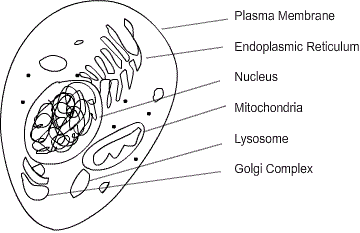Learninsta presents the core concepts of Biology with high-quality research papers and topical review articles.
Discovery of a Cell Definition and its Structure
Aristotle (384 – 322BC), was the one who first recognised that animals and plants consists of organised structural units but unable to explain what it was. In 1660’s Robert Hooke observed something which looks like ‘honeycomb with a great numbers of little boxes’ which was later called as ‘cell’ from the cork tissue. In 1665, He compiled his work as Micrographia.
Later, Anton Van Leeuwenhoek observed unicellular particles which he named as ‘animalcules’. Robert Brown (1831 – 39) described the spherical body in plant cell as nucleus. H. J. Dutrochet (1824), a French scientist, was the first to give an idea on cell theory. Later, Matthias Schleiden (German Botanist) and Theodor Schwann (German Zoologist) (1833) outlined the basic features of the cell theory.
Rudolf Virchow (1858) explained the cell theory by adding a feature stating that all living cells arise from pre-existing living cells by ‘cell division’. Cells were first discovered by Robert Hooke in 1665. He observed the cells in a cork slice with the help of a primitive microscope. The cell theory, that all the plants and animals are composed of cells and that the cell is the basic unit of life, was presented by two biologists, Schleiden (1838) and Schwann (1839).
A cell is the smallest and most basic form of life. Robert Hooke, one of the first scientists to use a light microscope, discovered the cell in 1665. In all life forms, including bacteria, plants, animals, and humans, the cell was defined as the most basic structural and functional unit.
The cell (from Latin cella, meaning “small room”) is the basic structural, functional, and biological unit of all known organisms. Cells are the smallest units of life, and hence are often referred to as the “building blocks of life”. The study of cells is called cell biology, cellular biology, or cytology.
The levels, from smallest to largest, are: molecule, cell, tissue, organ, organ system, organism, population, community, ecosystem, biosphere.
A cell consists of a nucleus and cytoplasm and is contained within the cell membrane, which regulates what passes in and out. The nucleus contains chromosomes, which are the cell’s genetic material, and a nucleolus, which produces ribosomes.
The cell is the smallest structural and functional unit of living organisms, which can exist on its own. Therefore, it is sometimes called the building block of life.
The cell is the structural and functional unit of all known living organisms. So, the entire functioning of the living organisms begins from the basic unit called cell. Hence, cell is called the fundamental unit of life.
They provide structure for the body, take in nutrients from food, convert those nutrients into energy, and carry out specialized functions. Cells also contain the body’s hereditary material and can make copies of themselves.
The largest cells is an egg cell of ostrich. The longest cell is the nerve cell. The largest cell in the human body is female ovum. Smallest cell in the human body is male gametes, that is, sperm.
